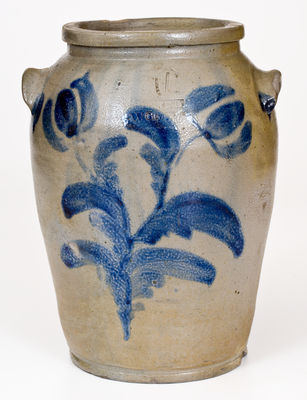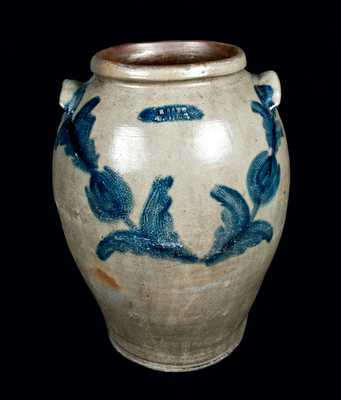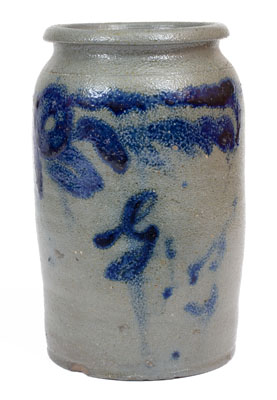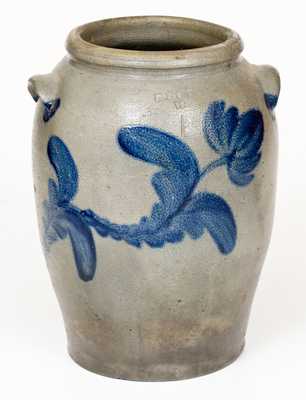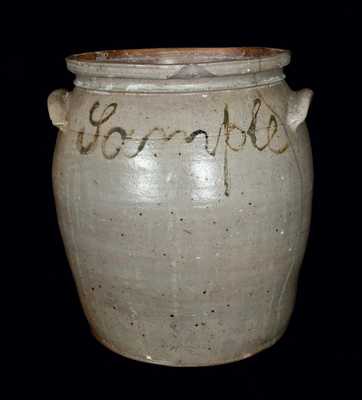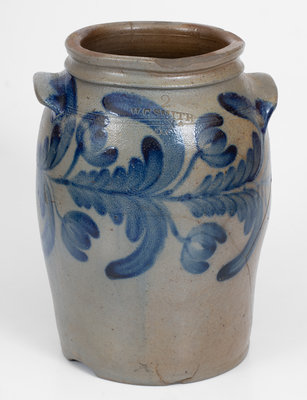Extremely Rare One-Gallon Stoneware Pitcher with Cobalt Floral Decoration, Stamped "JOHN WALKER / D.C.," Washington, D.C., circa 1830, squat-shaped, ovoid pitcher with footed base and cylindrical collar with semi-squared rim, brush-decorated around the body with two undulating vines bearing leaf-like blossoms. Drape decoration to collar. Cobalt highlights to handle terminals. Impressed with very rare "JOHN WALKER / D.C." maker's mark below a distinctive one-gallon capacity mark. Among the finest examples of Washington, D.C. stoneware known, this work combines the rarity of the maker's mark and form with lavish decoration inspired by the Wilkes Street Pottery of nearby Alexandria, Virginia. It is only pitcher from Walker's shop that we are aware of. Walker is one of the underappreciated characters in the history of the development of the American stoneware craft. Born in England, he immigrated to the United States in 1826 and apparently first produced stoneware in the large production center of Baltimore, MD, before moving to Washington, D.C. He eventually settled in Frankfort, Kentucky, where he made stoneware with his son-in-law, Lewis Mangan; before doing so, he worked in various locations in Ohio, most notably alongside the renowned Cornwall Kirkpatrick in Point Pleasant. Provenance: Green Valley Auctions, June, 2008, lot 21. Handle broken into three pieces and reglued, including a large chip along the break at the handle's midsection and minor chipping and a small reglued piece along the break near the upper terminal. Some surface wear to pitcher. Wear to rim and spout as well as a small spout chip and a few rim chips. A chip to underside of pitcher along bottom edge. Some surface crazing to underside and base, not visible on interior. H 10 1/4".










